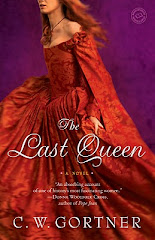If we are lucky in life, we get to meet and spend years with
our soul mate. I am one of the lucky. I met my human soul mate, my partner,
twenty years ago, and my canine soul mate, Paris, a Welsh Pembroke corgi, came
into our lives twelve and a half years ago, at the age of six weeks.
 She was an unexpected gift. Several weeks before our rescue
dog Chacha passed away after a long battle with an autoimmune disease which
left us grief-stricken and bewildered. We’d only had Chacha a year before she
became ill; having expected many more years with her, I was bereft. In mourning and
at a loss, we wanted a new dog soon after, but repeated visits to shelters did
not yield the right one. Looking back now, I realize we were seeking for a
replacement for Chacha, not a new dog at all; she had been a dachshund/corgi
mix, and we searched in vain for another like her. As the days went by, I
became despondent. My friends and partner rallied around me; one friend finally
took it upon herself to locate a litter of corgi puppies in Gilroy.
She was an unexpected gift. Several weeks before our rescue
dog Chacha passed away after a long battle with an autoimmune disease which
left us grief-stricken and bewildered. We’d only had Chacha a year before she
became ill; having expected many more years with her, I was bereft. In mourning and
at a loss, we wanted a new dog soon after, but repeated visits to shelters did
not yield the right one. Looking back now, I realize we were seeking for a
replacement for Chacha, not a new dog at all; she had been a dachshund/corgi
mix, and we searched in vain for another like her. As the days went by, I
became despondent. My friends and partner rallied around me; one friend finally
took it upon herself to locate a litter of corgi puppies in Gilroy.
I hardly recall the drive down,
but I do remember that moment when I first saw Paris—brought to me by her
breeder in a milk crate, she was the “runt” of the litter and priced at half of
what her siblings had gone for. I paid willingly and returned home with this
tiny, beautiful puppy whose markings were startling, perfect delineations of coal
black, russet brown and pure white. Her eyes were blue, but would change to a
soulful rich brown in time, as would her ears, rising to impressive peaked
height, and her chest, which developed a strong breadth and bony ridge that are
hallmarks of her breed. I named her
Paris in honor of the city, where my partner and I had planned to go on vacation
but canceled our trip due to Chacha’s illness.
She was tireless. She loved to hike and we patrolled the
hills of our neighboring park twice daily in two-hour walks. Because of her, I
met people I’d never have otherwise seen, fellow dog walkers whom I befriended
and whose dogs became Paris’s playmates. Eventually we graduated to longer and
grander hikes when my partner and I purchased a second home in Lake Tahoe.
There, a whole new world filled with adventure burst open for us, as we
explored dozens of mountain lakes and trails in our subsequent years together.
We even hiked to the top of Mount Tallac at 8,500 feet! Paris may well have
been the first corgi to accomplish that feat. And snow - oh, how she loved snow! It didn't matter how cold it was, she rolled and romped and frolicked in the stuff with abandon.
She also adored running water. Though she never swam willingly,
at the falls of Taylor Creek she could spend hours knee-deep in crystalline pools,
nipping and barking and drenching herself in the cascades. She loved to tear
apart pine cones and nibble on the tender seeds inside; squirrels were designed
specifically to drive her crazy and the chatter of chipmunks seemed to echo her
name, like a network of warning that the pesky corgi was among them. Yet
despite her herding instincts, she was invariably kind with other animals; she never
harmed another being, including the six feral cats who shared our lives in our
garden and whom she saw every day sunning themselves on our deck. It was she in
fact who discovered the two once-feral cats who now share our home, finding
them huddled under a bridge in the park and barking to alert me that their kittens
were tumbling about her feet. Feeding the cats in the park became part of our ritual, as
did long naps in the afternoon, sharing bananas and oranges and cheese, and jaunts about
town. Paris liked to travel, though she could on occasion get car sick. She
went several times with us to visit relatives in Los Angeles and it was always
a thrill to find that new park to walk in, that new smell or object to pee on.
She was always curious, always ready; she welcomed everything we did, no matter
how often we did it, as if it were the first time. Unlike so many of us, she
eschewed boredom. If things got slow, she simply dozed off for a while.
We had two near-encounters with death. The first was a
savage pit bull attack in the park that she narrowly escaped by rushing to me;
I had to beat the dog off her and we were both injured in the process. Paris’s
shoulder and ear were torn out; when her fur grew back on her shoulder, it had
a new white streak on the site, her battle scar. Her ear mended perfectly, to
the vet’s surprise. The second brush was with a marijuana-laced brownie; always
a chow-hound, she found it by the barbecue pits one Sunday and gobbled it up
before I could stop her. I had no idea it was drugged until two hours later
when we had to rush her to the emergency vet because she had lost muscle
control and was hallucinating. The vet spent the night shoveling charcoal down
her throat to induce vomiting; a very anxious ten hours later, we picked her
up, groggy and tired, but thankfully alive.
 Both occasions reminded me of the fragility of life and of
that unspoken pact between us, that I would see her through to the end. It
was easy to forget the pact, because her love taught me that the important
thing in life was to be in the moment. And thus we remained until she fell ill
with an esophageal disorder shortly before Thanksgiving. The disease was relentless,
depriving her of her ability to keep down her food. When dreaded aspiration pneumonia
set in on December 4 in the early morning hours, we rushed her to the same
emergency vet who had saved her life twice before. There was no saving her this
time; I had vowed she must not suffer. Her disease was incurable and so, as she
lay in my arms and my partner knelt before her, stroking her face, she left us
peacefully, with dignity.
Both occasions reminded me of the fragility of life and of
that unspoken pact between us, that I would see her through to the end. It
was easy to forget the pact, because her love taught me that the important
thing in life was to be in the moment. And thus we remained until she fell ill
with an esophageal disorder shortly before Thanksgiving. The disease was relentless,
depriving her of her ability to keep down her food. When dreaded aspiration pneumonia
set in on December 4 in the early morning hours, we rushed her to the same
emergency vet who had saved her life twice before. There was no saving her this
time; I had vowed she must not suffer. Her disease was incurable and so, as she
lay in my arms and my partner knelt before her, stroking her face, she left us
peacefully, with dignity.
I miss her every day. The initial anguish of her passing
overwhelmed me. I finally understood the meaning of the word ‘inconsolable.’
But as time, remorseless and healing, has begun to pass, I find glimmers of joy
in the memories of her beautiful face and expressive eyes that always regarded
me so intently, in her stub of a tail that wagged so insistently whenever I
returned home, no matter how brief my absence, and her solid warmth at my feet
when I wrote, reminding me with a nudge of her muzzle that it was time for lunch
or a nap or our walk. Though for today I remain lost without her, I know that
as time continues to pass my memories will vanquish the sorrow, for I am a
better human for having loved her. She was the dog of my soul, you see, and I
am lucky to have met her.
Farewell, my sweet Paris. Until we meet again.













_by_Claes_Van_Visscher.jpg)






























